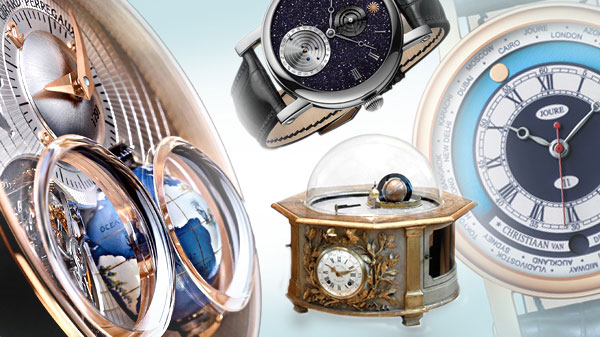
Planetarium Watches: Capturing the beauty of our cosmos in a wrist-sized package
Planetarium watches have long been star attractions in haute horology circles. Given humanity’s enamourment with the almost otherworldly nature of our cosmos, who could say no to the option of carrying a mini solar system on your wrist? Although they may seem like a modern creation, planetarium watch mechanisms existed long before its current wristwatch form.

In days before the Age of Enlightenment (a.k.a. the 18th century), the use of planetariums were limited exclusively to those of a scientific bent exploring the secrets of the solar system. But as humanity become more informed and cultured, the uppermost strata of society began to take a benign interest in these fascinating mechanisms.
They spawned a series of intricate timepieces that tracked the progression of celestial bodies – a novel and cutting-edge idea at the time. French watchmaker Passement’s 1765 Louis XV Tellurian Orrery Clock, commissioned by the French royal court, was one such example. This table-top clock featured an accurate representation of the Earth and moon revolving around the sun.

In more modern times though, planetarium watches have been shrunk down to portable sizes thanks to advents in watchmaking technology. Many of these advancements can be attributed to the works of one man – Christiaan van der Klaauw. The Dutchman – a giant in the world of haute horology – started his eponymous brand over 40 years ago, specialising exclusively in designing astronomical complications.
His Satellite du Monde, released in 1996, was the first real planetarium wristwatch. The rather busy dial featured an astrological complication which indicated, in real time, where noon was falling on our planet.

Three years later, he wowed the world by unveiling the CVDK Planetarium, the smallest planetarium complication ever made. Miniaturised down to sub-dial size, the beautiful face showed the real-time orbits of Mercury, Venus, Earth, Mars, Jupiter and Saturn around our sun.
Aside from in-house designs, his atelier has lent its expertise to other timepiece manufacturers. One such example is the custom-made mechanism that adorned Van Cleef & Arpels’ Lady Arpels Planetarium which was unveiled at SIHH earlier this year. (Read our feature on this watch and other SIHH highlights here.)

That’s not to say that CVDK holds a monopoly over planetarium watches. Other brands have also attempted to put these astrological complications into their designs. One brand that’s reaped fantastic results is Girard-Perregaux. In addition to having not one, not two, but three flying tourbillons, its Planetarium Tri-Axial Tourbillon features a mini-Earth that completes one rotation every 24 hours.

Planetarium watches don’t often surface on the market. They’re extremely complicated, time-consuming and difficult to produce. But when they do emerge, they’re lauded by the haute hologerie world and watch enthusiasts without fail.
Text: Tenzing Thondup
Images: Antiquorum, CVDK, Van Cleef & Arpels, Girard-Perregaux







